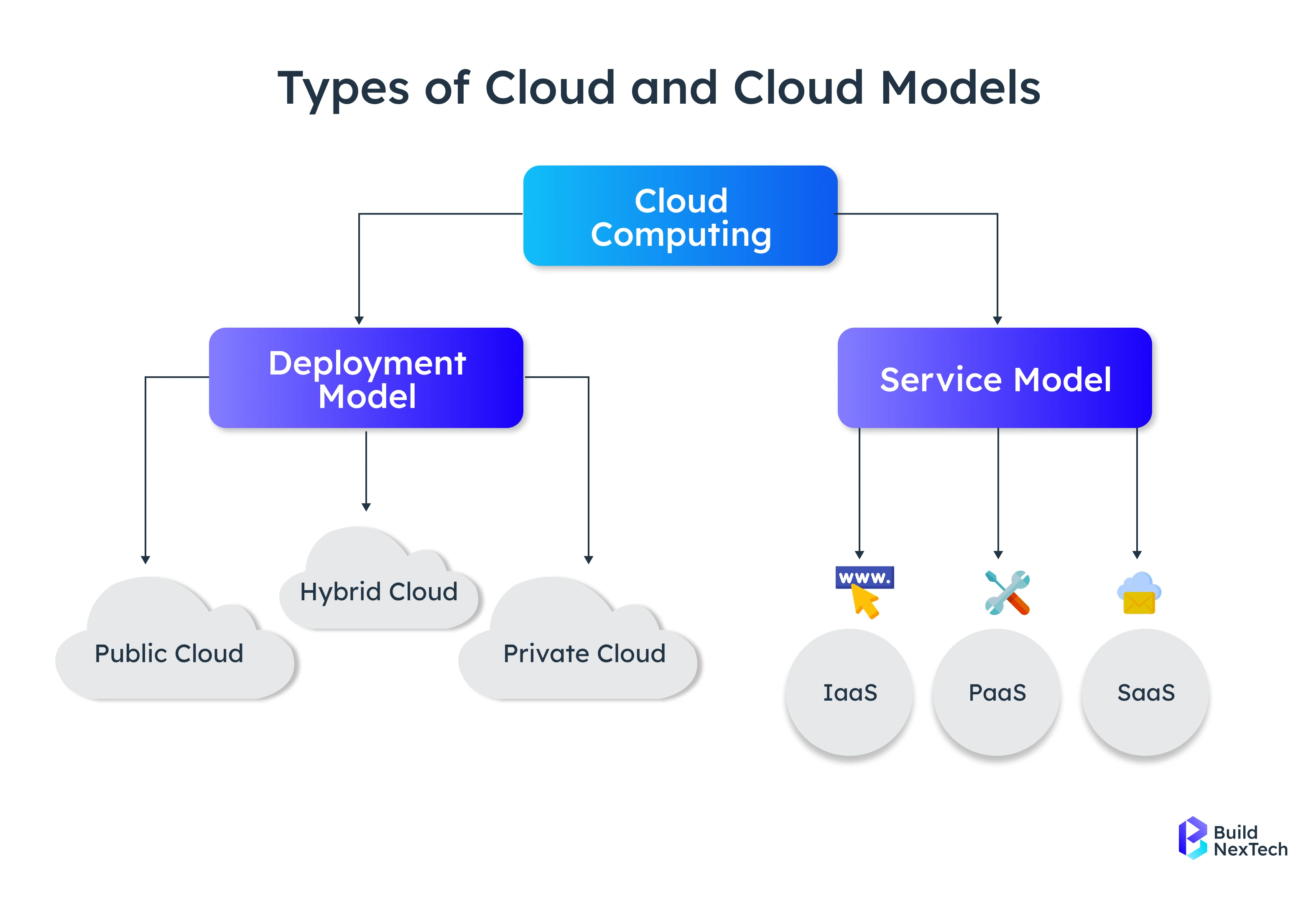Finding the appropriate cloud service provider is among the most significant choices an organisation will make as it undergoes a digital transformation.With so many cloud technologies, platforms, and pricing options available, understanding how to choose and use them can directly impact performance, security, and ROI.
A capable cloud migration service provider moves applications seamlessly while maintaining data security. The provider implements the necessary IT cloud solution and deploys cloud based servers to support sustainable business growth, helping organizations achieve the maximum benefits from cloud migration.
This complete guide reviews 10 common considerations prior to selecting a service provider, as well as offering considerations for cloud infrastructure, cloud strategy, and post-migration Optimisation.
Overview of Cloud and Migration
The cloud serves as the basis for contemporary IT processes, allowing businesses to transition from traditional data centre environments to flexible, scalable cloud-based infrastructure that allows operations to be executed globally and enables time collaboration.
Types of Cloud and Cloud Models
- Public Cloud -Operated by third-party public cloud providers, which comprise AWS Cloud, Microsoft Azure, Google Cloud Platform (GCP), Oracle Cloud, and IBM Cloud. Ideal in terms of low cost and scalability.
- Private Cloud - Provides dedicated organisations with the private cloud services in cases where the cloud requirements are stronger in terms of security, compliance and control of the data.
- Hybrid Cloud - Consists of on-premises systems and cloud-based systems and is flexible yet has data sovereignty.
- Multi cloud - Using more than one cloud provider to avoid relying on a single vendor, improve performance, and increase flexibility.

These models are the keystones of the Infrastructure as a Service (IaaS), Platform as a Service (PaaS), and Software as a Service (SaaS) - each of which provides various degrees of control, management, and automation.
One such process, cloud migration, which entails transferring applications, data and workloads to a cloud platform, can contribute to updating the systems, bettering the storage and accessibility of data by remote access and workload tools.
Why Cloud Migration Matters for Businesses
Migrating to the cloud offers unparalleled opportunities for innovation, efficiency, and cost savings. Businesses today use cloud technologies to improve scalability, enable a cloud-first approach, and reduce operational risk.
Key Benefits of Cloud Migration
- Agility and Flexibility: Scale operations instantly using cloud infrastructure.
- Data Security and Integrity: Enforced security protocols protect digital assets and maintain data integrity across systems.
- Cost Optimisation: Through cost management and cost analysis, companies can eliminate redundant systems and pay only for actual cloud usage.
- Compliance and Governance: Meet compliance requirements and adhere to data protection laws with reliable cloud governance frameworks.
- Innovation and Modernisation: Enable Application Modernisation and faster delivery cycles through cloud DevOps services and cloud application development services.
For small enterprises, cloud solutions for small businesses provide enterprise-level functionality at affordable rates, allowing them to leverage the same cloud architecture as global corporations.
Key Factors to Evaluate
When choosing a cloud computing provider, evaluate the following 10 essential factors to ensure successful migration and long-term stability.
1. Assessing Business Needs and Provider Expertise
Choosing the right provider is essential for a successful cloud migration. The appropriate provider ensures that you migrate to a cloud solution aligned with your objectives, protects your data, supports compliance requirements, and maximizes business benefits from a powerful IT cloud solution.
Important Steps:
- Identify your organization's desired outcomes, workflows, and type of cloud deployment: public, private, or hybrid.
- Determine if you need a private cloud service with high security or a scalable cloud hosting service.
- Have a cloud vendor in mind that has demonstrated experience and proficiency in cloud technology, cloud application migration, or cloud governance.
- Choose a managed cloud service provider that has multi-certifications across AWS Cloud, Microsoft Azure, Oracle Cloud, and/or Google Cloud to support Google Cloud migration.
- Determine that your vendor offers a guarantee for data security and can help you maximise the full effectiveness of an abundant IT cloud solution.
2. Evaluating Migration Strategies and Tools
Implementing a well-designed migration strategy is critical for a successful cloud migration. Organisations can leverage rehosting, replatforming, refactoring, repurchasing or retiring as an efficient application migration strategy. A good cloud service provider will leverage the latest application migration tooling, cloud monitoring, and data security solutions to facilitate minimal downtime, data protection, and a seamless transition to your cloud platform.
A trusted provider should tailor your migration strategy to your workloads. Whether you’re rehosting, replatforming, refactoring, repurchasing or retiring , you must ensure:
- Smooth application migration
- Secure data storage
- Integration with existing on-premise systems
- Continuous cloud monitoring post-migration
Advanced cloud DevOps services and automation tools enhance deployment efficiency, while AI-based analytics offer predictive cloud monitoring and performance tuning.
3. Cost Transparency and Optimisation
Understanding costs prior to initiating your cloud migration is critical. A trusted cloud service provider will offer full disclosure on pricing, detailed information, and assistance in optimizing utilisation of resources. Effective cost management provides savings without sacrificing performance, scalability, or alignment with your cloud strategy.
- Of course, public cloud vendors will likely provide flexibility with various pay-as-you-go models.
- Enterprise solutions (like Microsoft Azure or IBM Cloud) may include discounted long-term contracts where equivalent services may cost less than using the public cloud model on a pay as you go basis.
Overall, effective cost management works to eliminate billing surprises cloud consulting organisations will also assist in designing, implementing and managing a cloud strategy focused on cost savings strategy without sacrificing scalability.
4. Data Security and Compliance
It is important to maintain security and compliance standards throughout cloud migration. A trustworthy cloud service provider utilises stringent protocols, DDoS protection, and continuous monitoring of the cloud to ensure digital assets remain secure.
In addition to using the new cloud services, using expert-recommended cloud security practices such as multi-factor authentication, data encryption, and regular audits will ensure you are maintaining the integrity of your data, limiting unauthorised access to data, and are properly compliant with industry regulations and data protection/ privacy laws for all industries.
Look for:
- Data encryption at rest and in transit
- Identity and access management (IAM)
- DDoS protection and continuous cloud monitoring
- Adherence to data protection laws like GDPR, HIPAA, or ISO standards
Robust security protocols and expert cloud security tips ensure data integrity and safeguard digital assets throughout migration and daily operations.
5. Service Level Agreement (SLA) Review
An effective Service Level Agreement (SLA) defines connectivity, response times and responsibility. Choosing the right cloud service, with the appropriate SLA terms, will ensure service reliability, performance and reduced vendor lock-in.

A solid SLA agreement gives you the confidence of knowing the service you will receive during migration and for the duration of the cloud relationship.
Evaluate:
- Guaranteed uptime percentages
- Data recovery commitments
- Support response windows
A transparent SLA protects against service interruptions and vendor lock-in, ensuring you can switch providers or adapt to a new cloud platform if business needs evolve.
6. Performance, Reliability, and Monitoring
In cloud reliability, the aspect of performance and reliability plays a vital role. A trusted cloud service provider is organised and strict in the regard to ensuring that things are operating, the performance of the system is high, low latency and high availability, and they are applying their tools, as in AWS Cloud Monitoring, to determine the health of the system and its many components.
The performance of the cloud can be optimised using continuous monitoring in the cloud to ensure that the problems are noted in time, and everything runs effectively and efficiently.
Performance directly affects how productive a business is. The best cloud service providers offer:
- 99.9% uptime or higher
- Global data centres for low latency
- Integrated cloud monitoring tools (like AWS Cloud Monitoring)
Providers with advanced cloud infrastructure leverage predictive analytics and work with experienced hybrid cloud solutions providers to ensure consistent reliability.
7. Post-Migration Support and Managed Services
Ongoing support is crucial for a smooth cloud experience. A reliable managed cloud solution provider offers 24/7 assistance, cloud DevOps services, and guidance on cloud governance.
Continuous support ensures optimal performance, security, and helps your business fully leverage the cloud platform post-migration.Migration success depends on ongoing support.
Top managed cloud solution providers offer:
- 24/7 technical assistance
- Automated updates and patches
- Cloud consulting services for strategy improvement
- Cloud DevOps services for continuous deployment
This ensures operational resilience and helps avoid disruptions after public cloud migration or application modernisation projects.
8. Integration and Interoperability
It is highly significant to have a successful transition to the cloud by ensuring smooth integration and interoperability. The cloud service provider will make sure that your applications, databases, APIs, and legacy systems can work together and allow you to run the way you need to run efficiently and innovatively. With a harmonious integration of projects and workloads, the users and organisations will face fewer headaches since there will be less downtime, maximum performance, and increased adoption of the new cloud technologies.
Critical Things to note:
- Ensure that it is compatible with your current applications, databases, API, and legacy systems on the cloud service provider.
- In case your organisation uses a large portion of Microsoft or Oracle ecosystem, then think about the migration of workload to either Microsoft Azure (commercial) or Oracle Cloud as either of them might have a more favorable interoperability between applications and legacy systems.
- Use Power of Platform as a Service (PaaS) solutions to develop scalable platforms, which are commonly API-driven, to support integration and innovation.
9. Security Governance and Cloud Compliance
Efficient cloud governance ensures your operations are secure, compliant, and managed well. A respected cloud service provider will oversee security policies and protocols, safeguard data integrity, oversee compliance regulations, and ensure protective measures to comply with data protection legislation. In this way, it protects your assets and lessens regulatory risks. Effective cloud governance addresses accountability and compliance, in addition to technical control.
Leading cloud consulting companies establish frameworks for:
- Compliance requirements and audits
- Identity and access governance
- Risk assessments
- Continuous security monitoring
This governance layer minimises exposure to data breaches and regulatory penalties.
10. Innovation, Modernisation, and Future Readiness
An innovative cloud service provider will support the ongoing Modernisation of Applications and adoption of new cloud technologies. Using cloud DevOps tools, PaaS platforms, and a cloud-first approach helps you manage applications efficiently, respond quickly to demand, and stay competitive in the digital world.
In addition, an innovative provider is a partner who will support your cloud-first agenda by continuously supporting innovation.
The cloud infrastructure capabilities should incorporate the following:
- Incorporation of AI and automation in the cloud architecture.
- Serverless technologies and microservices
- Support for Application Modernisation
- Continuous improvement through cloud consulting services
Whether through multi cloud, hybrid cloud model, or platform-specific features like Google Cloud Platform’s AI tools or AWS Cloud’s Lambda functions, innovation ensures long-term business agility.
Cost, Support, and Performance Insights
Taking into account the price, reliability, and performance will ensure a successful cloud migration. Each cloud platform offers its own advantages, and understanding distinctions will assist business decision-makers in determining which option aligns best with its objectives.
- AWS Cloud - AWS is deeply integrated with a wide range of services and is known to have the best cloud monitoring in the industry. The AWS infrastructure model, with global availability, allows for cost efficiencies with performance and a seamless scaling experience.
- Microsoft Cloud (Azure) -Strong in hybrid cloud integrations, enterprise compliance, and seamless interoperability with legacy Microsoft products.
- Google Cloud Platform (GCP) - Market leader in innovation, stronger data analytics platform, better scaling of cloud workloads at lower prices per unit.
- IBM Cloud - Dedicated to security, regulatory compliance, and hybrid cloud workloads, and best used in regulated industries with data restrictions.
- Oracle Cloud - Primarily for enterprise clients leveraging Oracle databases and enterprise cloud apps. Provides optimal performance and integration for enterprise applications.

Each provider has different SLAs, pricing, and support options. The right one for your successful migration is dependent on your cloud strategy, compliance requirements, performance level, and long-term scalability. The right provider ensures users stay within budget, workloads operate reliably, and you get the most value from your cloud platform.
Conclusion and Key Takeaways
When it comes to selecting a cloud migration service provider, it is not merely about platforms, services, or costs but about the future of your business, compliance and the realisation of the innovation objectives. With a clear cloud strategy, effective data security, Service Level Agreement (SLA) review, integration of managed cloud services through continuous cloud governance, as well as, contracting the expertise of a reputable cloud consulting firm, your organisation can be agile, ensure the integrity of data, and fully realise the potential of cloud technologies.
People Also Ask
In what ways does cloud migration help advance digital transformation?
Business cloud migration allows organisations to deploy modern infrastructure, increase scalability, and leverage newer technologies to inform more rapid decision-making and more flexible operations.
Does AI or automation have any importance to cloud migration in the modern setting?
AI and automation allow in transactions where workloads and applications can be migrated at an accelerated rate, workloads can be optimized, cloud monitoring can be automated, and human errors can be restricted in the procedure.
Which has a better long-term scalability, hybrid or multi-cloud strategy?
Hybrid and multi-cloud strategies reduce vendor lock-in and offer flexibility. Hybrid cloud balances on-premises and cloud workloads, while multi-cloud distributes workloads across multiple providers for greater reliability, resilience, and scalability.
How can small and medium enterprises (SMEs) approach cloud migration differently?
SMEs can take advantage of lower cost cloud options, we recommend SMEs to start with high-value workloads, consider managing cloud service options, and then appropriately scaling workloads if appropriate, to combat complexity.


























.webp)
.webp)
.webp)

